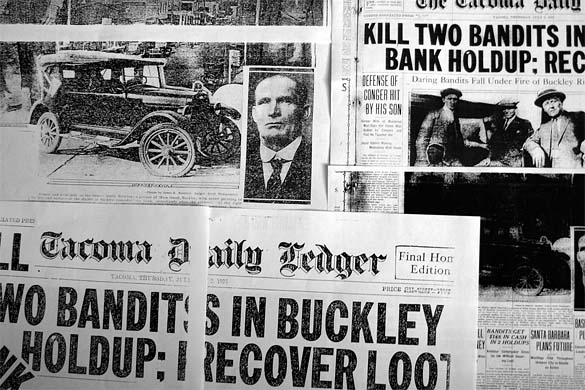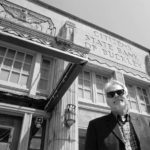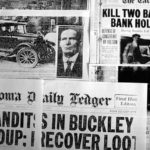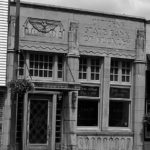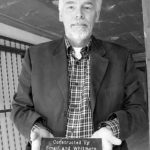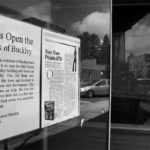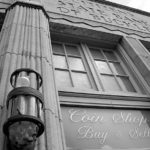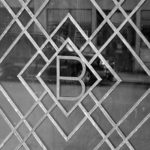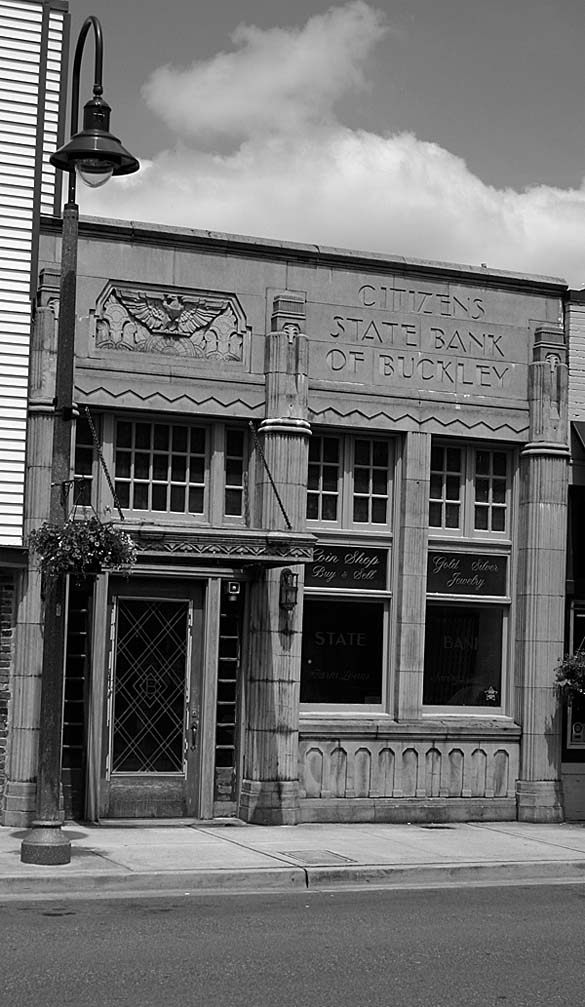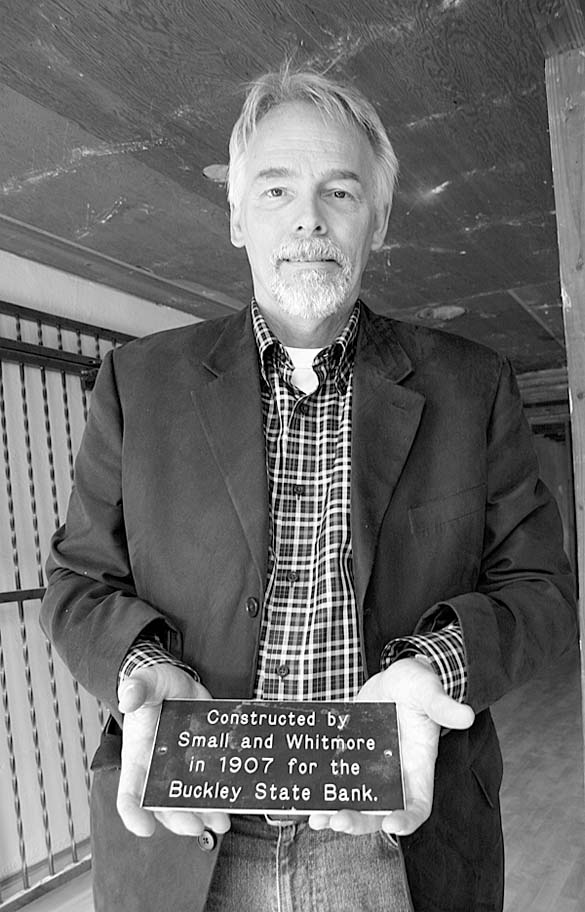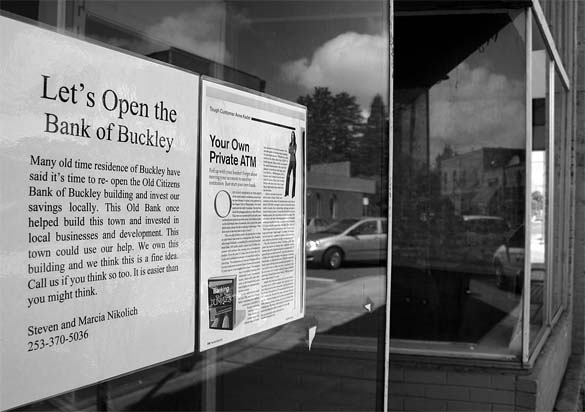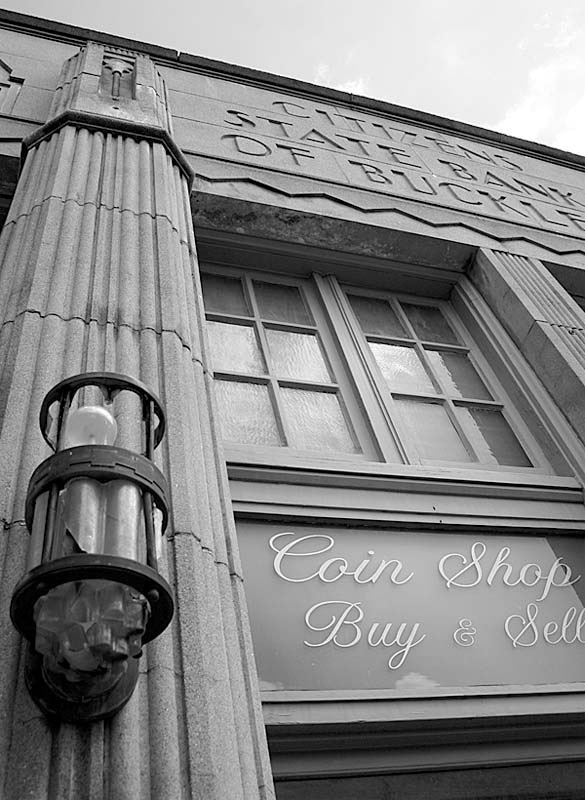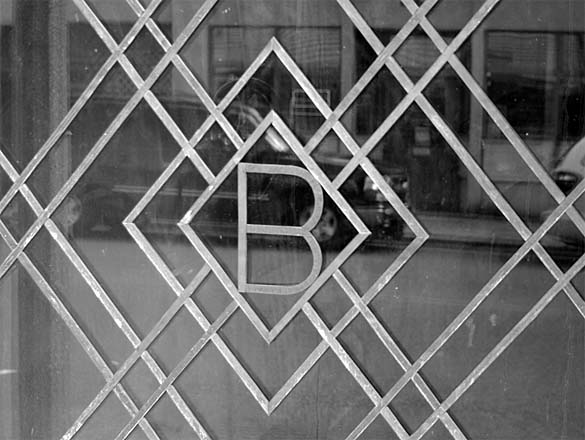ON A BRIGHT and sunny day in Buckley, Wash., during the summer of 1925, Cora Craig took her three-year-old daughter Joyce in to town for a walk along Main Street. The mother and daughter were headed toward the town bank, a narrow, one-story building wedged between a row of other buildings that comprised Buckley’s tiny commercial stretch. Joyce wanted a piggy bank and the only place to go for that was the State Bank of Buckley.
Mother and daughter walked past Patzer’s Confectionery, Lewis and Nickerson Grocery, a beauty parlor, and a variety store before stepping between stately columns and beneath a portico that fronted the bank and inside, where two bank employees — A. E. Hovey and his assistant Cecil Stewart — worked behind counters. Bank president Christian O. Steberg was in his office writing a letter.
It was 2:50 p.m. when Cora and Joyce approached a teller’s window, but were startled by two men who bursted through the bank’s front door and ordered everyone to the floor.
According to The Tacoma Daily Ledger and The Buckley Banner, a scene straight out of Hollywood played out on this rural town’s Main Street.
As the robbers stormed the bank, Hovey kicked on the alarm, alerting other merchants and passersby that a robbery was under way. One of the burglars walked toward Steberg’s office and pointed a gun. He ordered the bank president to open the vault and load a sack with cash. Meanwhile, Hovey, Stewart, and a bank customer named W. A. Evans were ordered to lay down in a back room.
Cora and Joyce were held at gunpoint, too. “It’s amazing how that stuck in my memory,” said Joyce, who now has the last name Toney and recalled on Tuesday the event that occurred 85 years ago today. “I can remember us being backed up against the wall and the robbers holding the tellers hostage.”
According to the Ledger, Town Marshal Ed Nelson walked into the bank but couldn’t draw his gun fast enough. He was ordered to the back room, too.
Still, as the bandits turned to flee the bank — one of the men clutching some $2,000 stuffed into a sack — the marshal pulled his gun and fired off two shots. Hovey pulled his own gun and followed the marshal out the door and onto Main Street. According to the Banner, one of the robbers was shot in the left leg, and his blood trailed behind him as he staggered west along Main Street, toward Cottage Avenue and the bandits’ black 1923 Chevrolet touring car.
On his way out the door, however, he encountered William Rose, who owned the confectionery store next door. Rose, like other merchants, heard the alarm and positioned himself outside the bank to take aim at whoever was robbing the town bank and, in turn, the town’s citizens. Rose and the robbers exchanged gunfire, with Rose taking a bullet to the groin. He would die the following day at a hospital in Enumclaw.
The wounded robber climbed behind the wheel of the car as his partner threw the sack of money in the back seat and fired on the bank from the car’s running board.
“All the shop keepers at the time seemed to have firearms in their shops,” said Toney, who now lives a short distance from Main Street. “They were all out on the sidewalk.”
Indeed, ex-marshal Aaron Haydon emerged from a grocery store and aimed his shotgun at the car. He fired at the robber who was clinging to the car from atop the running board; a fatal shot blasted through the robber’s left eye. His body crumpled to the ground as the car sped north down Cottage Avenue. Amazingly, the driver turned his car around and headed back toward Main Street in an attempt to recover his cohort’s body, which now lay at the corner of Main and Cottage. It was surrounded by townspeople. The remaining robber parked his car and pointed his pistol into the crowd, and ordered someone to throw his partner’s body in the car. A police officer told the robber to drop his gun and put up his hands. The robber fired two shots at the police officer. They missed. The officer, in turn, fired at the robber, killing him with a bullet to the chest.
In the end, one robber’s body lay in the street with 11 bullet holes; the other’s body had eight bullet holes.
“There was so much gunfire,” recalled Toney. The Banner reported a house painter working nearby was grazed by a bullet. One resident’s car was parked out front, pockmarked by bullets. Only moments before, his wife sat in the passenger seat waiting for him to come out of the bank. Tired of waiting, she got out of the car and walked over to her mother’s house before the shoot out.
“I remember seeing the black touring car go up the street and turn around,” said Toney. “I can remember seeing the shop keepers out on Main Street with their shotguns. The next day, they showed us where a bullet had just missed my mother.”
TODAY, IT’S HARD to believe a shoot out occurred on Main Street. During a visit last week, downtown’s three-block stretch was quiet. Dogs napped on a ledge in the storefront window of Klips By Kim, the local dog groomer. The Hometown Restaurant offered a deal on breakfast. The display window at Chuck’s Pharmacy showed historic photos of the town. Teenagers on summer vacation hung out at the Main Street Coffee House. The only noise came from the Timber Room lounge, where the melody of “Do It Again” by Steely Dan spilled out of the front door.
Still, one important remnant from that day remains: the old building where the shoot out occurred. The building, located at 766 Main Street, is owned by Steven and Marcia Nikolich, Lake Tapps residents who own several commercial buildings in town. On a recent morning, Steven Nikolich, a developer in the area since 1978, unlocked the doors and let a reporter inside to inspect the vault and hear about his interest in restoring the bank building.
Six years ago, the Nikoliches were eating dinner at a restaurant in town when Marcia looked out the window and noticed the bank building and its Art Deco facade and boarded windows. “It’s really sad to see that old building just sitting there,” Marcia said. “Let’s buy it.”
“We did not know exactly what we were going to do with this building,” said Nikolich recently. “I like researching things and I love history. So we bought it, started taking stuff up, and [did some repairs].”
Nikolich combed through county records and newspaper archives to piece together the bank’s history. He keeps all of it in a black binder full of old photos, newspaper clippings, and historic maps. He even has photocopies of deposit slips filled out by customers and signed by Steberg, the bank’s president. One deposit slip, dated Nov. 30, 1909, was filled out by ‘Mrs. R. Fife.’ On the back of the slip, Mrs. Fife wrote a note with instructions to the bank for when her daughter visits: Please give Ellie Fife $15.
“When I see things like this, I think, ‘Wow, this is cool!'” said Nikolich.
“The Bank of Buckley has got to be the coolest commercial building in Pierce County,” raves architectural historian Susan Johnson. “I love the bank robbery story, but the first State Bank of Buckley — a scam, not the same as the real bank which opened later — is classic Wild West crime.”
Johnson and her colleague, Katie Chase, work at Artifacts Consulting in Tacoma and recently completed an inventory of historic buildings in Pierce County. During that project, Johnson wrote a short history of the building. According to Johnson, Buckley’s bank roots pre-date Nikolich’s building.
In 1891, one year after Buckley officially became a town, Samuel Hart and F. A. Dinsmore opened the Buckley State Bank; Hart was the president, Dinsmore was the cashier. Both were crooks. According to Johnson’s research, one day town residents awoke to news that the two bankers had fled town with all the money in the bank.
Buckley was swindled.
Still, as the town grew into a hub for miners and loggers, it became clear a bank was needed. In 1903, Anthon Eckern, who lived in Portland, Ore., and John Morris, who owned Buckley Hardware Company, started the Bank of Buckley. They hired Steberg as the cashier. The bank prospered. Nobody absconded with the deposits, and Steberg eventually was promoted to bank president. In 1907, the bank turned public and moved into its headquarters on Main Street.
In 1930, the bank hired prominent Tacoma architect E. J. Bresemann (responsible for Steilacoom Town Hall, many public schools in Tacoma and Pierce County, and the Washington State Soldier’s Home in Orting) to remodel the facade in a cast stone Art Deco style. An eagle was engraved high above the front door. The words ‘STATE BANK OF BUCKLEY’ were carved out in a blocky Art Deco font. Eighty years later, the facade needs attention. Wall sconces near the front door are broken. Historic chain wall anchors support an ornamental awning that is busted up and missing its ceiling.
“The thing that I find funny is a lot of people will be talking about the robbery, see a chip or something, and say, ‘That’s where the bullets were,'” said Nikolich. “Well, this facade was put on in the 1930s. They tore the old one off. That robbery happened in 1925.”
SINCE PURCHASING THE building, Nikolich leased it to a coin dealer for a couple years. But the shop closed when the city tore up Main Street as part of a massive public works project, according to Nikolich. He would really like to see the building restored and preserved. Lots of people have ideas. Few have time or money.
Still, he’s done some repairs. The original vault was restored. And Nikolich recreated the original front door, complete with geometric metal work that frames a giant “B” for Buckley.
“What I really wanted to do was get some of these buildings on the historic register and try to get the Main Street program going out here,” he said, referring to a program in Washington State that spurs economic development through historic preservation in small-community downtowns. “These are things that have been on the back burner for us. Lenders look at [buildings like this] as junk. They say, ‘Get rid of it.’ I can’t get rid of it. I want to see somebody take it and do something and follow through, or put it in a trust or something. That’s where we are at right now. It’s kind of a bit of a labor of love. We’re just trying to see if we can make this thing happen.
“Marcia and I have a soft spot for this town,” Nikolich added. “We always have. This building has always been a centerpiece. I would like to see this become a working bank that invests back in the community.”
Todd Matthews is editor of the Tacoma Daily Index and recipient of an award for Outstanding Achievement in Media from the Washington State Department of Archaeology and Historic Preservation for his work covering historic preservation in Tacoma and Pierce County. His work has also appeared in All About Jazz, City Arts Tacoma, Earshot Jazz, Homeland Security Today, Jazz Steps, Journal of the San Juans, LynnwoodMountlake Terrace Enterprise, Prison Legal News, Rain Taxi, Real Change, Seattle Business Monthly, Seattle magazine, Tablet, Washington CEO, Washington Law & Politics, and Washington Free Press. He is a graduate of the University of Washington and holds a bachelor’s degree in communications. His journalism is collected online at wahmee.com.
